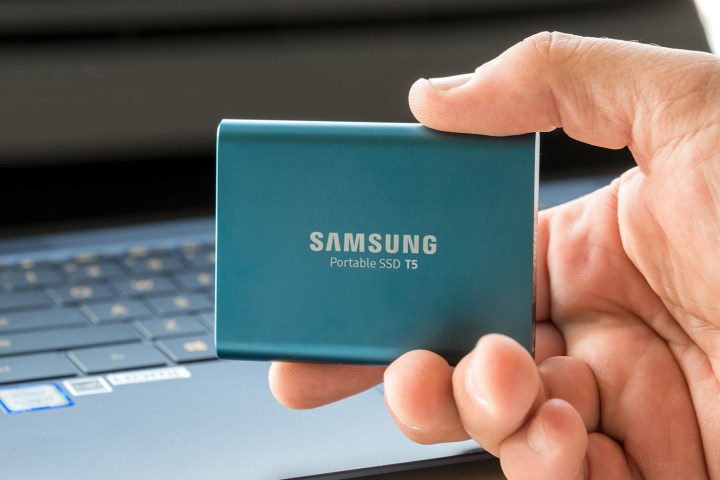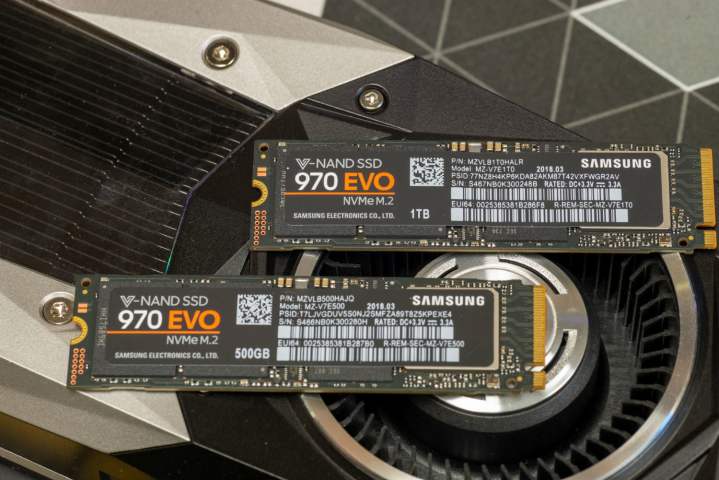With lower failure rates and a potentially longer life span, many people These days choose solid-state drives (SSDs) over mechanical hard drives.
For anyone in the market for a new computer or an SSD, there are some things you should know before you spend a bunch of money. Our SSD guide will give you a better idea of how these drives work, what their advantages are, and what distinguishes different types of SSDs.
What is a solid-state drive?
SSDs work differently than a traditional hard drive (HDD) as there are no moving parts. Whereas HDDs use spinning disk platters to access information, SSDs store data on flash memory chips, much like a smartphone, USB drive, or slimline tablet. Since the drive doesn’t have to wait for any platter to spin to where your data is located, all memory chips are accessible at the same time. This makes it much easier for users to access their information at high speed.
SSDs are built differently because of this and are available in a variety of different shapes and sizes, but they are more expensive to manufacture. Even as prices come down, they remain more than double the cost of hard drives at a similar capacity in 2020. This is especially true for the fastest and largest SSDs. Prices may also take a big jump when you move past the 1TB mark.
SSD advantages

Solid-state drives are becoming far more common in everything from high-end gaming PCs to entry-level laptops, and with good reason. They have several advantages over traditional hard drive storage, and embedded flash memory (eMMC).
No moving parts: The big problem with moving parts in hard drives is that they are a significant point of failure. If any of the moving parts break, the entire drive becomes unusable. That makes traditional hard drives vulnerable to drop damage and wear over time.
SSDs have their lifespan limitations, but they’re generally more durable and reliable. There are no moving parts to damage and no drive motor to break. This reliability makes SSDs great for portable, external drives, which may be subject to more rigorous use and handling.
Speed: SSDs can write or read data at incredible speeds compared to HDDs and even eMMCs, which is useful for transferring large blocks of data. More crucially, their random access times are in microseconds rather than milliseconds. That’s why SSD systems boot up so fast, games load so quickly, and systems based on SSD technology just feel snappy and responsive.
Mobility: SSDs are smaller and lighter than previous drives. This development makes it possible to create today’s ultra-thin laptops, tablets, and other mobile devices. The thinnest SSDs are just millimeters wide and only a few inches long, making them ideal for the smallest of high-speed devices.
Low failure rates: After years of development, SSDs malfunction far less often than HDDs, and they maintain their speed throughout their lifetime, too. The low failure rates are down to widespread material improvements and features like error-correcting code (ECC) that keep SSDs on the right path.
Size and design: SSDs can come in many different shapes and sizes, depending on how many chips they have and the overall chip arrangement. They can fit into a graphics card slot, 2.5-inch drive bays, and M.2 slots. There’s an SSD for almost any occasion, and that makes them far more versatile than other types of storage.
Longer lifespan: Every SSD has a lifespan that’s limited by wear on the drive’s ability to store the electrical charges sent to it properly. The lifespan of hard drives is usually measured in the number of terabytes that can be written to the drive before the flash cells degrade. That can equate to a decade or more of use for a typical buyer. Research has shown that not only do SSDs last longer than HDD counterparts, but they also last longer than experts expected.
Types of SSDs

SSDs come in a few different shapes and sizes, and that can affect their speed, their storage capacities, and even their thermal output.
SATA III: SATA III is the last evolution of an older connection option that works with both HDD and SSD. It was advantageous during the transition from HDD to SSD, as hard drive-compatible motherboards could then work with the new standard. It’s still the most common one used in modern SSDs but is by far the slowest at around 550MBps. It also involves a SATA cable connecting the drive to the motherboard, so it adds clutter.
PCIe: The Peripheral Component Interconnect Express or PCI Express (PCIe) slot is typically used for graphics cards and add-in cards like USB ports and sound cards. However, there are now PCIe SSDs that can use all the additional bandwidth for exceedingly fast data transfers.
The latest-generation PCIe 4.0 drives were first launched on AMD’s X570 motherboards and can deliver sequential read speeds up to 5,000MBps and write at up to 4,400MBps. Their prices are often more than double that of their SATA counterparts, and all that extra bandwidth doesn’t always equate to a big difference in real-world usage.
M.2: These SSDs are the smallest and work well to balance space and performance, though their speed can differ. They use both SATA and NVMe controllers, which can confuse some.
The M.2 SSDs have a short pin connector and lie flush with the motherboard, making them great to save space. However, they overheat quickly because of low airflow, especially working with high-performance drives. To prevent overheating, M.2 SSDs sometimes include heatsinks or heat spreaders
NVMe: The Non-Volatile Memory Express lets nearly all types of PCI Express and M.2 SSDs transfer data to and from the host system. Combining NVMe with those interfaces creates efficient speeds, an excellent match for capable storage systems.
Editors' Recommendations
- Google Drive vs. Dropbox: which is best in 2024?
- The best free photo-editing software for 2024
- The best SSDs for 2023
- The 11 best external hard drives for 2024
- Western Digital responds to claims that SanDisk SSD failures have design flaw





